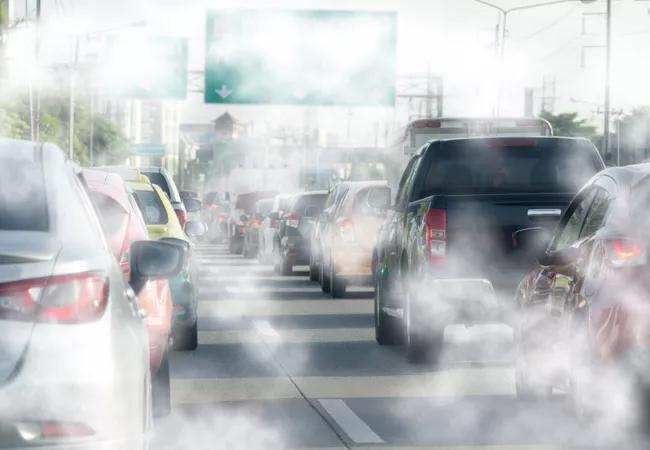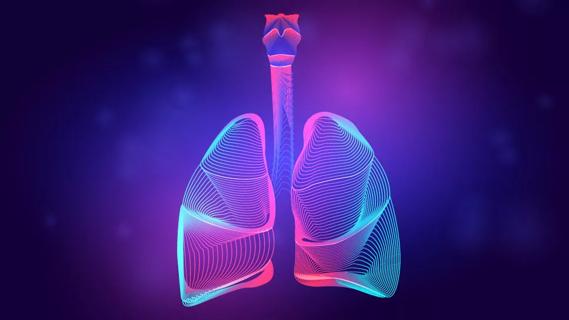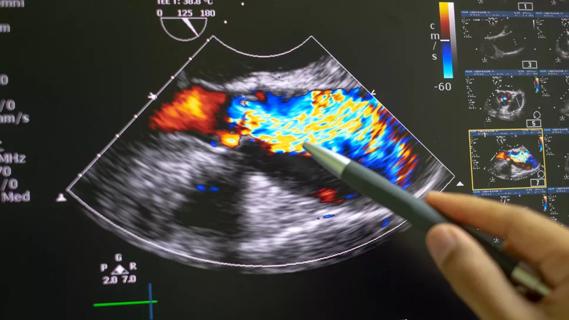Advertisement
Results of a recent study indicate important implications for individuals experiencing homelessness and policy interventions

By Maeve G. MacMurdo, MBChB, MPH; Karen B. Mulloy, DO, MSCH; Daniel A. Culver, DO; Jacqueline Curtis, PhD
Advertisement
Cleveland Clinic is a non-profit academic medical center. Advertising on our site helps support our mission. We do not endorse non-Cleveland Clinic products or services. Policy
Exposure to air pollution, particularly fine particulate matter (PM2.5), has been associated with increased mortality and morbidity, even at levels below the National Ambient Air Quality Standards.1 While overall levels of air pollution exposure across the United States have decreased, this decrease has not been evenly distributed. Low-income and non-white majority communities face disproportionate exposure to PM2.5 from sources ranging from factory emissions to high traffic roadways.2
Historically, researchers investigating the impacts of PM2.5 exposure on health have used stationary monitoring data to estimate exposure. These stationary monitors provide highly accurate, frequent air pollution measurements within the monitor range. However, extrapolating these measurements outside of their intended monitoring range has limitations.
Multiple studies have now shown that important components of air pollution, including PM2.5, nitrogen dioxide and ozone vary in concentration at distances as small as 500 feet.3 For a neighborhood, this means that exposure to air pollution may vary from block-to-block, or even from house to house.

Figure 1: Census tracts by Home Owners Loan Corporation redline grade and distribution of stationary air monitors (with 1 km buffer represented by black outer circles) within Cuyahoga County.
Additionally, we increasingly recognize that the areas facing some of the highest burden of air pollution exposure have the least access to reliable stationary monitoring data. Within Cuyahoga County, the vast majority of neighborhoods impacted by historic redlining do not have access to reliable stationary air monitoring data (Figure 1). These neighborhoods still face the highest burden of chronic diseases such as asthma, heart disease and hypertension. For clinicians working to reduce the health impacts of environmental injustice, understanding the true burden of exposure to air pollution experienced by at-risk communities is an important first step.
Advertisement
In addition to the limitations of understanding PM2.5 distribution based on environmental monitors, there is also a lack of data on human behavior that may confer protection or increase exposure within this riskscape. These data gaps result in knowledge gaps that hinder clinical and public health interventions.
Data sparsity especially impacts vulnerable populations, such as migrant agricultural workers, indigenous communities and people experiencing homelessness. In particular, individuals experiencing unsheltered homelessness make up a growing proportion of the United States population. In areas where access to shelters or temporary housing is limited, individuals experiencing unsheltered homelessness may face higher levels of exposure to dangerous air pollution because of where they sleep and spend their day.
In collaboration with researchers from Case Western Reserve University and the Tulare County (California) Department of Health and Human Services, we worked to identify the sources of air pollution exposure faced by this community through a novel technique called local knowledge mapping. In this method, individual participants draw on a map where they live, work and spend their day. This paper base map is used to generate an electronic “activity space” for each participant.
By bringing this activity space together with localized data on the distribution of environmental conditions, we can estimate the exposure to air pollution experienced by an individual in the home, their workplace and broader community where they live. These techniques also offer a chance for individuals within the community to voice their own concerns about exposures within their neighborhood — allowing researchers to identify sources of harmful exposure that may otherwise be unrecognized.
Advertisement
We found that more than half of our unsheltered homeless participants spent their daytime hours within 1000 feet of a major roadway, and that the vast majority slept within 1000 feet of a registered stationary emitter — a facility, factory or commercial operation releasing PM2.5 or organic gas compounds.4 Using satellite-derived estimates of the PM2.5 levels from the year participants completed mapping, we were able to show that the annual mean exposure to PM2.5 experienced by our participants exceeded the national air quality standards.5 These relationships would not have been uncovered using conventional stationary monitor data.
Our results have important implications, both for the health of individuals experiencing unsheltered homelessness, and for policy interventions that help individuals experiencing homelessness access housing.
Expanding on this work, our group is now working to utilize local knowledge mapping to quantify the air pollution exposure faced by agricultural workers within our community, and to link this exposure to respiratory health. The insight of individuals living and working within a community is an important part of the overall piece of the puzzle for researchers working to understand the harmful impacts of air pollution on lung health. Local knowledge mapping is an important tool to translate this insight for use in research and policy — improving the air where we live and breathe.
References:
Advertisement
Advertisement

Pearls to reduce the strain of RSV, COVID-19 and influenza infections

Largest study examines factors affecting asthma exacerbations during and after pregnancy

Initial findings demonstrate improved symptoms and reduced steroid dependence

Findings show profound muscle loss variance between men and women

VOC analysis could provide biological insight into risk factors associated with CDI

A review of conservative, pressure-based and surgical treatments for OSA

Volatile organic compounds have potential in heart failure diagnostics

Insights for diagnosing, assessing and treating